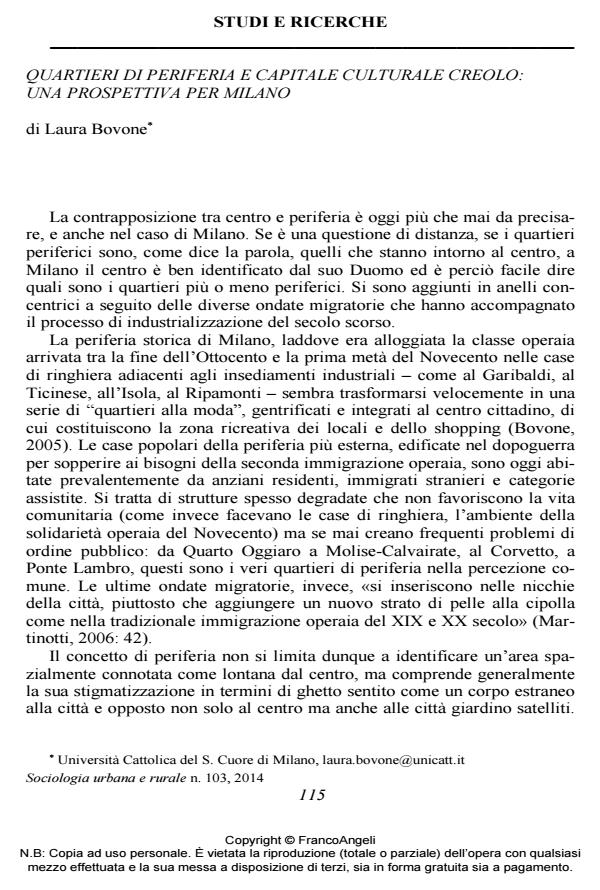Peripherical Districts and Creole Cultural Capital: a Perspective for Milan
Journal title SOCIOLOGIA URBANA E RURALE
Author/s Laura Bovone
Publishing Year 2014 Issue 2014/103
Language Italian Pages 25 P. 115-139 File size 1255 KB
DOI 10.3280/SUR2014-103007
DOI is like a bar code for intellectual property: to have more infomation
click here
Below, you can see the article first page
If you want to buy this article in PDF format, you can do it, following the instructions to buy download credits

FrancoAngeli is member of Publishers International Linking Association, Inc (PILA), a not-for-profit association which run the CrossRef service enabling links to and from online scholarly content.
Gentrification - mostly pushed by small creative businesses- had acentral role for the regeneration of semicentral areas in Milan during last century’s final decades. In this millennium, in suburban areas, the scene is occupied by real estate companies and the related archistars. Monumentalization and gentrification could cooperate promoting "visitability" and new consumers together with the restoration of old and picturesque sites and the defence of local cultures and professions. City’s polarization - due to two considerable incoming populations, the global network of transnational capitalistic bourgeoisie and migrants’ fluxes - could be mitigated by the middle classes, small entrepreneurs, artisans, businessmen: on the one side small and traditional neighborhood shops, sometimes at a standstill; on the other new entrepreneurs or old entrepreneurs able to creatively redefine their activity following the cultural vocation of the postmodern city. The thesis is that this creative class has actually in its hands the future of Milan’s symbolic economy and can connect the big protagonists and the many who are discarded by the city. Starting from these considerations, the six neighborhoods taken into account were classified into a typology according to the importance of the small cultural enterprises for their regeneration.
Keywords: Milan, districts, gentrification, cultural capital, creolization, peripheries
Laura Bovone, Quartieri di periferia e capitale culturale creolo: una prospettiva per Milano in "SOCIOLOGIA URBANA E RURALE" 103/2014, pp 115-139, DOI: 10.3280/SUR2014-103007